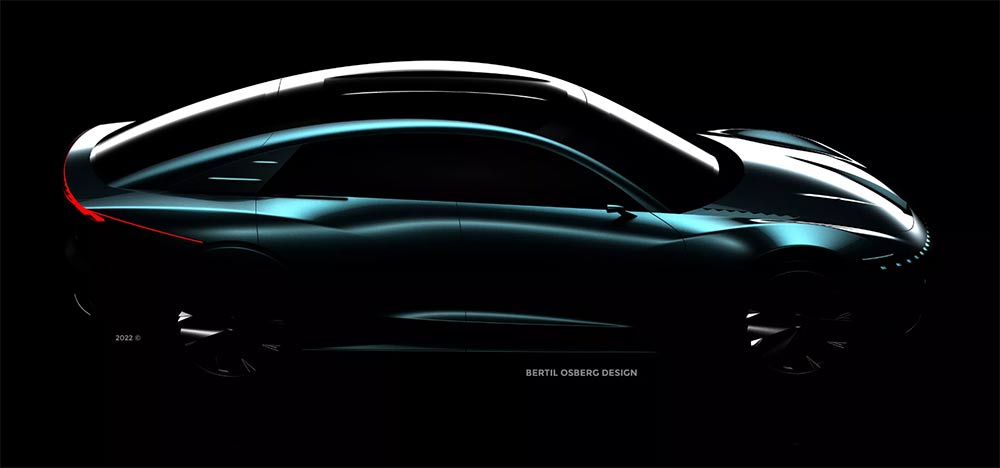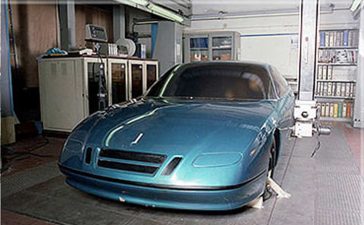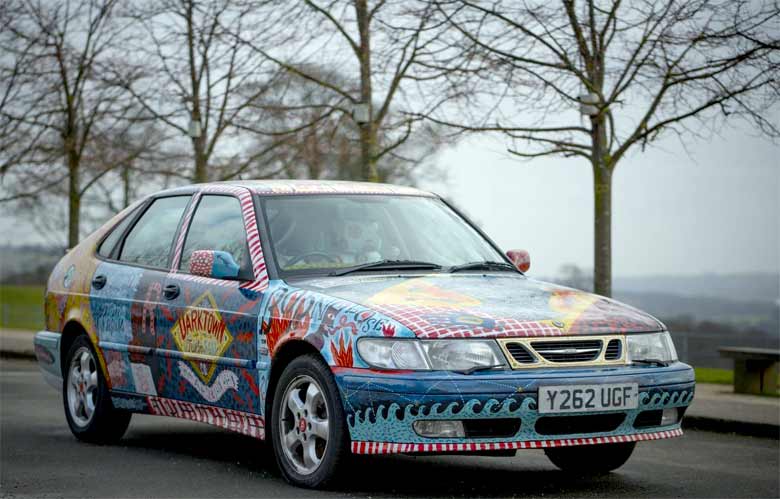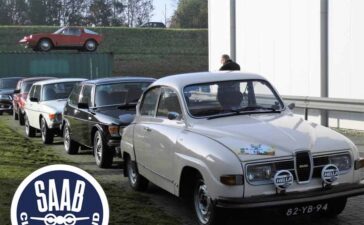This is what a Saab of the future could look like. This is another prototype car that, unfortunately, will not see its premiere anytime soon, and we don’t know about the future . At least if you ask the industrial designer Bertil Osberg. He has allowed himself to be inspired by the Ursaab, the very first.
When we already mention prototype cars and UrSaab, he should also look back on how it all started. After the war, the aircraft manufacturer Saab did not really know what to do with its resources, when military aircraft were no longer in demand. As early as June 1945, the idea of starting to manufacture cars was discussed and on June 10, 1947, the first prototype was shown to the press. Or, actually, it was the second prototype that was built, but nobody knew that at the time.
Thus, this year marks a valuable anniversary – 75 years since the production of the first Saab cars. And we know how it went further: Saab made many cars during its history, but then it faltered, and then General Motors got involved, which tried on several occasions. to save the company, but the car manufacturer Saab Automobile went bankrupt in 2011.
Table of Contents
- 1 Saab has always focused on the needs of drivers
- 2 Design sketches of a prototype that respects Saab’s values
- 3 At Saab, they always thought about environmental protection
- 4 Saab of the future is not an SUV
- 5 Touches of the Saab 900, Saab 9000 and Saab 9-5 NG
- 6 Future Saab: EV or Turbo on Synthetic Fuel
Saab has always focused on the needs of drivers
Saab’s bankruptcy marked the end of a car brand with roots in the aircraft industry. A car manufacturer that also made a name for itself with innovations in the field of safety (headlamp wipers, self-healing bumpers, active headrests) and mass use of turbo technology. Saab was also known for its idiosyncrasy. Sometimes it went too far, so Saab’s engineers, with the best of intentions, exaggerated the importance of details. This cost quite a lot and of course was not sustainable in the long run.
Design sketches of a prototype that respects Saab’s values
Although Saab cars are long gone, these cars are still very inspiring for new generations of industrial designers. So independent designer Bertil Osberg created a concept car that has some typical Saab values and features of Saab design.

According to Osberg, these are currently more topical than ever. Think of the attention to safety and the streamline of the very first Saabs. But also the combi-coupé concept and the barrier-free entry that debuted with the Saab 99. And the generous space offer of the Saab 9000.
At Saab, they always thought about environmental protection
In addition, Saab has taken care of the environment since its beginnings. The Swedes were already installing catalytic converters in the mid-80s, and thanks to Saab’s Trionic engine management, the 9000’s exhaust was cleaner than the outside air in central London. Saab was also the first brand to stop using asbestos in brake pads and freon in the coolant of its air conditioning systems.
Saab of the future is not an SUV
With all of the above in mind, Osberg incorporated some of these features into his prototype. His ‘Saab of the future’ is – of course – a five-door fastback, or “combi-coupé” in Saab’s terminology. According to Osberg, the SUV does not fit into Saab’s philosophy. Although SUV cars are the defacto current trend in the field of car form, the “real” Saab in the eyes of designers and enthusiasts is not an off-road vehicle but a high-performance luxury sedan.
With this concept, barrier-free entry into the car is also present, as are the rear wheels that are partially hidden behind the sheet metal. Like the original Saab and Saab 92. The wheels have movable spokes, which improves aerodynamic properties.
Touches of the Saab 900, Saab 9000 and Saab 9-5 NG
The large wheelbase provides – as with the Saab 9000 – plenty of interior space. We recognize the last Saab 9-5 (NG) and the 9000 CS in the vehicle-wide rear light. In the integrated tailgate spoiler we see styling features of the classic Saab 900.
The steeply sloping hood and narrow headlight units are reminiscent – again – of the Saab 9000 CS. On the other hand, the grille shows similarities with some later studio models and the Saab 9-5 NG. Of course, the wing symbol is not missing. Born from a jet, you know…
Future Saab: EV or Turbo on Synthetic Fuel
According to many, EV vehicles are the future, but also of course the present, but the time when all vehicles will be electric is still a long way off. That is why it is necessary to have some alternative in this time until the complete conversion. And those alternatives were dealt with by Saab a long time ago, almost twenty years ago. Saab had some electric concepts, but also BioPower concepts that used much more environmentally friendly ethanol.
According to Bertil Osberg, an electric motor is the obvious choice if Saab would stick to its attention to the environment in 2022. On the other hand, Saab would be stubborn enough to bet on compact turbo engines and synthetic fuels. They also reduce CO2 emissions, although the EU does not want them.
Bertil Osberg has some 25 years of experience from the automotive industry. After an initial engineering degree, Bertil Osberg gained experience from automotive research & development at aerodynamic / climate windtunnels in Sweden and at a proving ground in the south western USA.












I love this concept. Wish we could see more pictures and a real concept car soon.